Can you freeze sourdough pizza dough? Absolutely! Making your pizza at home is not only fun but incredibly convenient. With the right techniques, you can store ready-made pizza dough in your freezer and whip up delicious homemade pizza anytime the craving strikes.
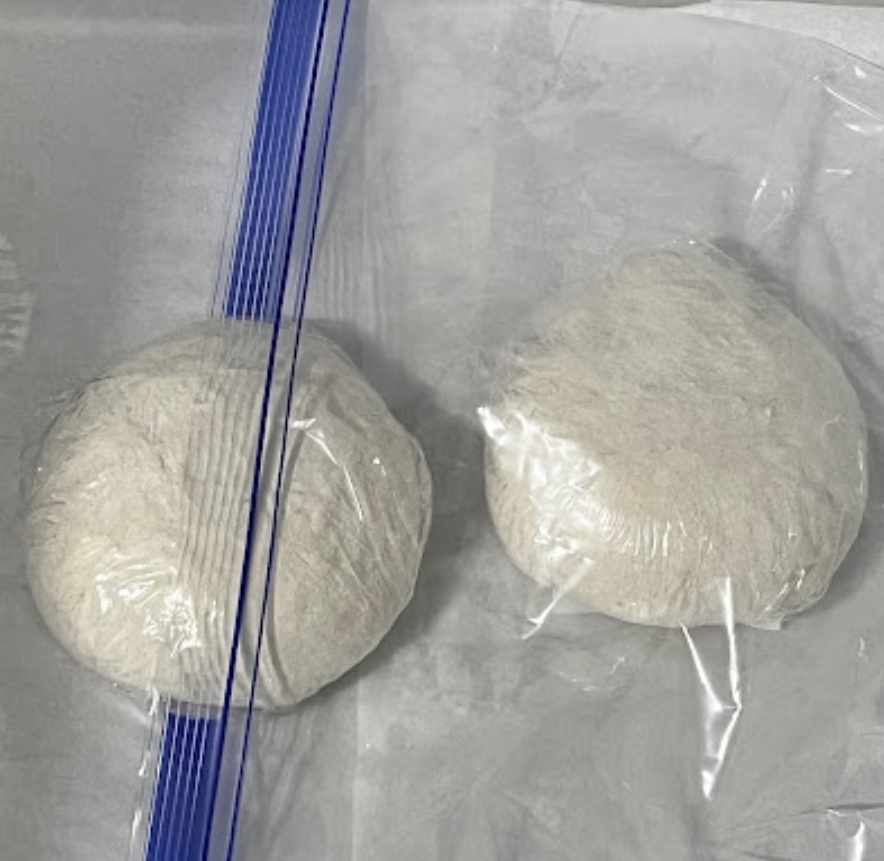
In this post, I’m sharing two fantastic methods for freezing pizza dough: par-baking and raw dough balls. I’ll walk you through both processes of freezing your dough so you can choose the right method for you.
Ready to give it a try? Here is a link to my favorite sourdough pizza recipe!
If you prefer to try this with sourdough discard, here is my favorite recipe for making sourdough discard pizza dough.
I’ve been making and freezing pizza dough for some time, and through much trial and error, I’ve figured out how to get the best results every time. Here’s what I’ve learned about preparing the pizza dough for freezing.
Freezing Dough vs. Par-Baking Dough
Freezing raw pizza dough is a way to preserve the dough by storing it in the freezer for later. Par-baking involves partially baking the pizza dough without toppings for a ready-to-top crust you can finish baking later.
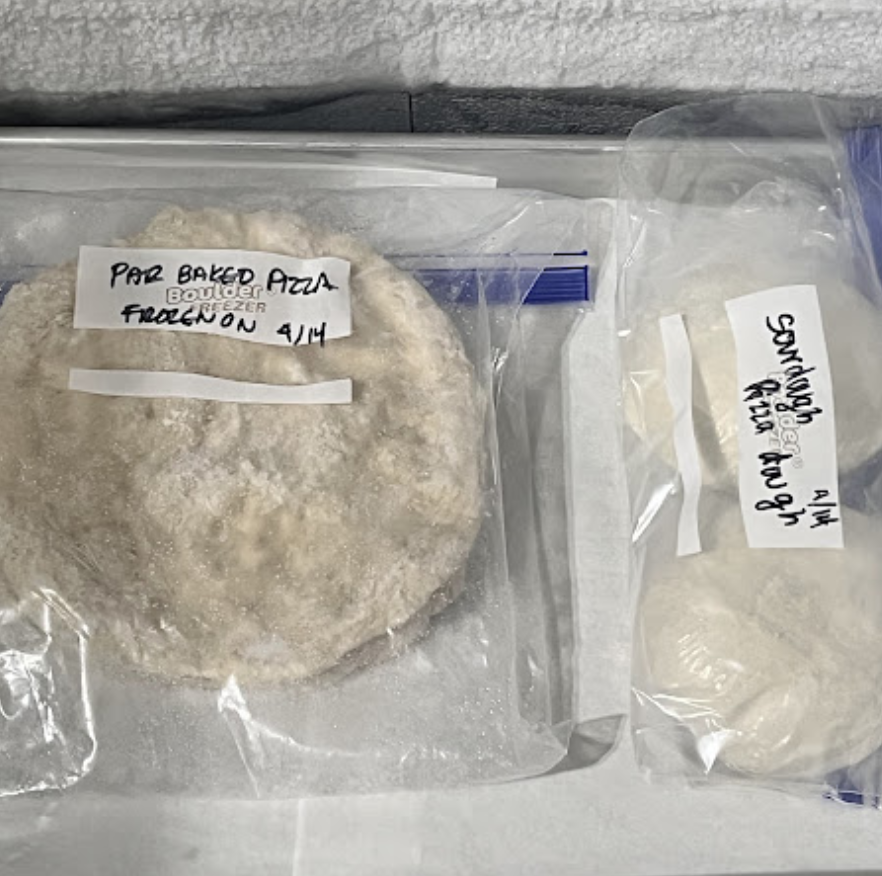
Both are great ways to have delicious sourdough pizza crust without all the work. Which is best for you? Here’s what I love about each:
- Freezing raw dough requires a little planning, but if you remember to defrost the dough in your fridge overnight, you’ll have delicious pizza the next day!
- Par-baking homemade pizza dough loses a little flavor and texture, but makes up for it in convenience. It’s so easy to add your favorite pizza toppings, pop in the oven, and have pizza ready in just a few minutes.
How Do You Par-Bake Pizza Dough?
Here’s how to par-bake pizza dough to freeze for later use:
- Prepare: Make your pizza dough, and let it rise.
- Shape: Shape it into thin rounds.
- Preheat and Bake: Heat your oven to 450-500°F (232-260°C). Bake the dough rounds for 3-5 minutes just until they are set but not browned.
- Cool and Freeze: Let the crusts cool completely to prevent any steam from being trapped during freezing and wrap each crust tightly in plastic wrap or ziplock bag, then freeze.
When ready to eat, top a frozen crust with your favorite toppings and bake at 450-500°F for 10-15 minutes until golden and bubbly.
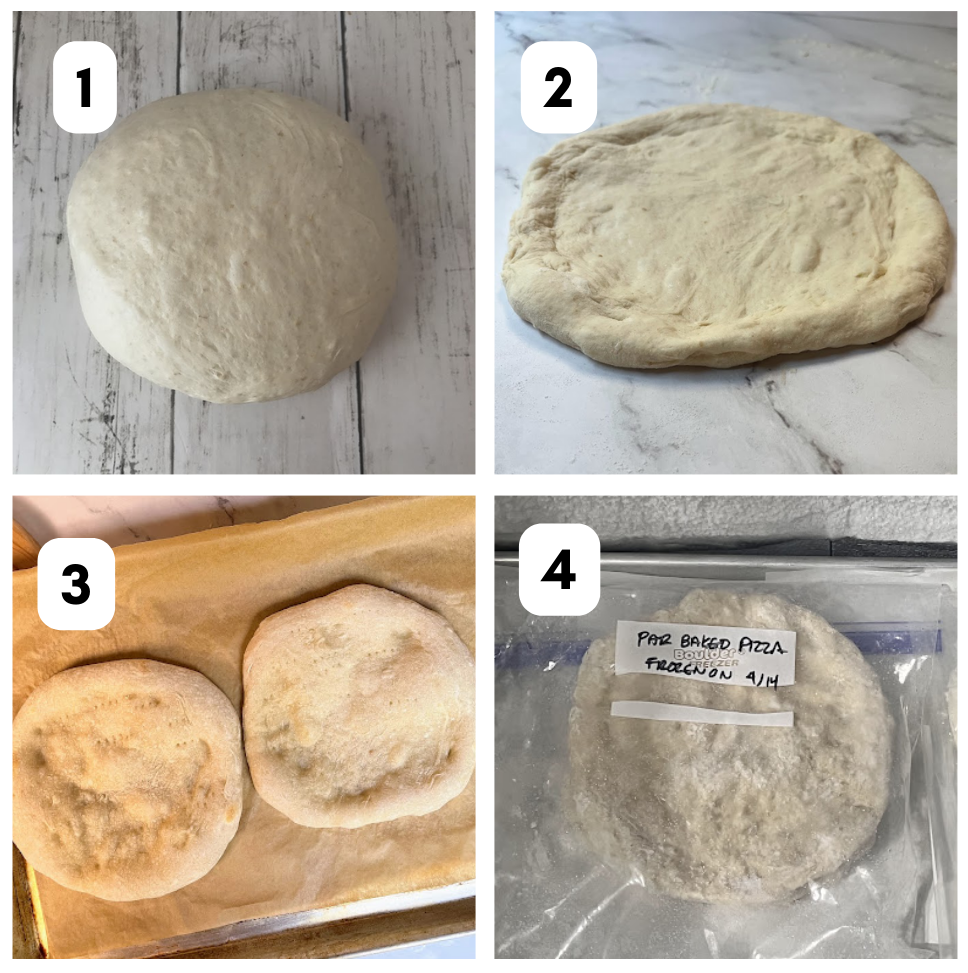
This method saves time and lets you enjoy homemade pizza with minimal effort on busy days.
Can You Freeze Sourdough Pizza Dough?
Yes, you can freeze sourdough pizza dough effectively by timing the freeze after the bulk fermentation but before the final shaping. This allows the dough to develop a rich flavor and proper structure during its initial rise.
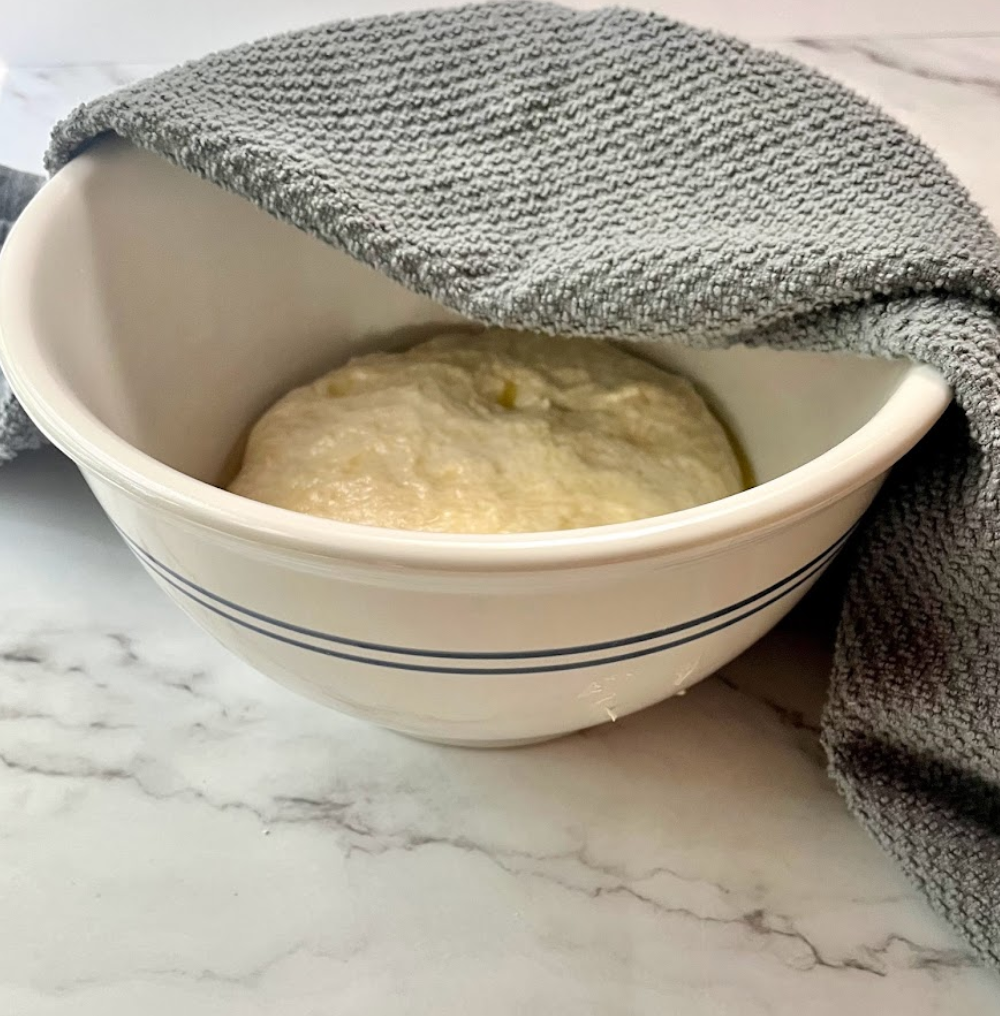
Optimal Timing for Freezing
Freeze the dough after its bulk fermentation, when it has risen and developed its structure, but before you shape it for the final proof. This preserves the dough’s ability to rise and develop texture once it’s thawed.
Preparing Dough for Freezing
Complete all stretch and folds during the bulk fermentation phase to strengthen the dough. After this, divide the dough into portions—typically 6 ounces for personal pizzas or 24 ounces for a family-sized pizza.
Shaping and Storing
Shape each portion into a tight ball to help in the final proofing process and create an even surface for topping later. Lightly coat each ball of dough with olive oil, place them on a parchment-lined baking sheet, and partially freeze. Transfer the semi-frozen dough balls to a freezer bag or airtight container to avoid freezer burn.
Thawing and Final Proofing
When you’re ready to make pizza, thaw the dough overnight in the refrigerator, then allow it to come to room temperature. Give it time for a final rise on a lightly floured surface or under a piece of lightly oiled plastic wrap, readying it for shaping, topping, and baking.
How Do I Bake My Frozen Sourdough Pizza Dough
The great thing about sourdough pizza dough is its depth of flavor and chewy crust! Here’s how to get that characteristic sourdough crust.
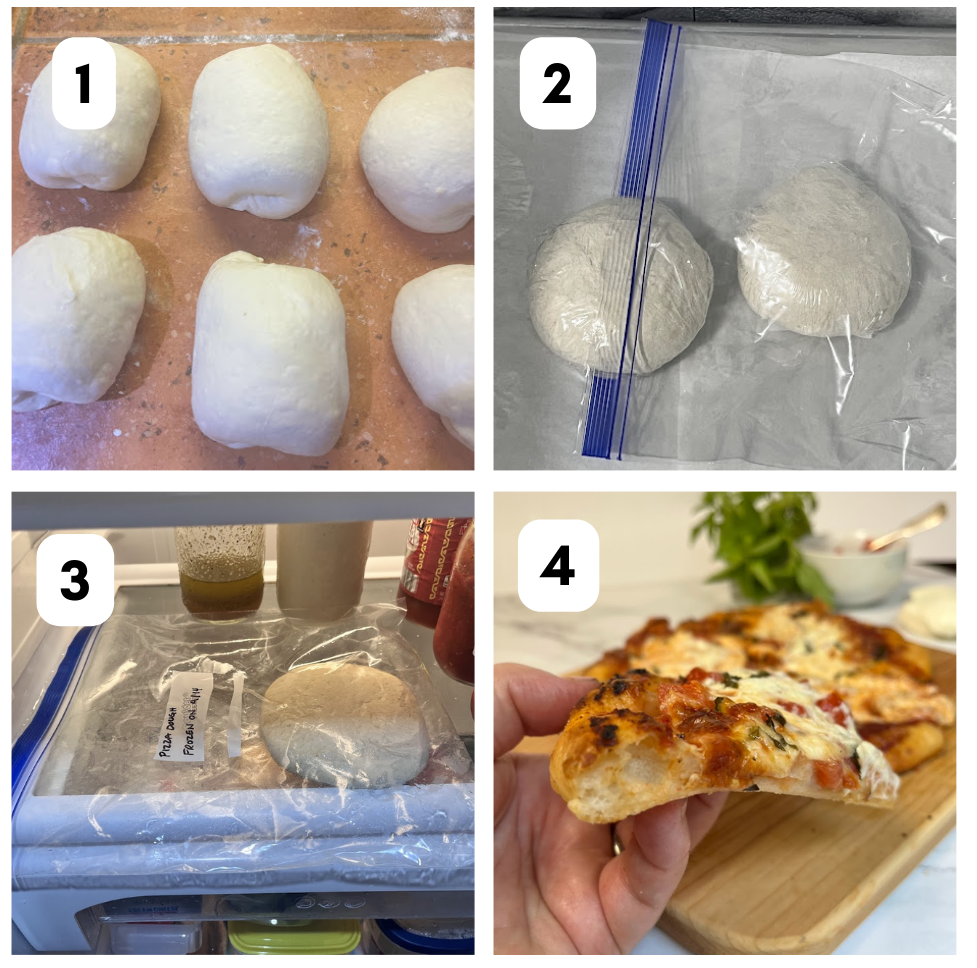
From Cold Ferment to Room Temperature Rise
To bake your frozen sourdough pizza dough, start by thawing the dough balls in the refrigerator overnight inside a plastic bag to prevent drying. Once thawed, let the dough come to room temperature which is essential for reactivating the fermentation process. This step ensures the dough recovers from the cold ferment and regains its leavening power from the active sourdough starter used initially.
Place the dough on a lightly floured work surface. Shape the dough into a round shape that is a little thicker around the outside edge. (Picture a steering wheel) Gently press the center flat, while stretching the edges of the dough to reach the desired size. Dust the dough with flour and let it rest for about 20 minutes to undergo its final rise.
Setting Up Your Baking Environment
Preheat your pizza oven or home oven with a pizza stone or baking steel placed inside to create a high-heat environment similar to a commercial pizza oven. This setup mimics the intense, even heat necessary for a crisp, well-baked crust.
Stretching and Topping the Dough
Dust your pizza peel with a little bit of semolina flour to prevent sticking, then stretch the shaped dough on top, ensuring it’s evenly spread into equal portions if making multiple pizzas. Apply a thin layer of pizza sauce or tomato sauce to the top of the dough, careful not to overload it to preserve the dough’s texture. Add toppings like mozzarella cheese, which melts beautifully for that classic pizza look and taste.
Baking and Serving
Using the pizza peel, slide your pizza onto the hot pizza stone or steel and bake until the crust is golden and the cheese is bubbly.
Does The Type Of Flour I Use Matter?
The type of flour you use in pizza dough significantly impacts the texture and flavor of your finished pizza.
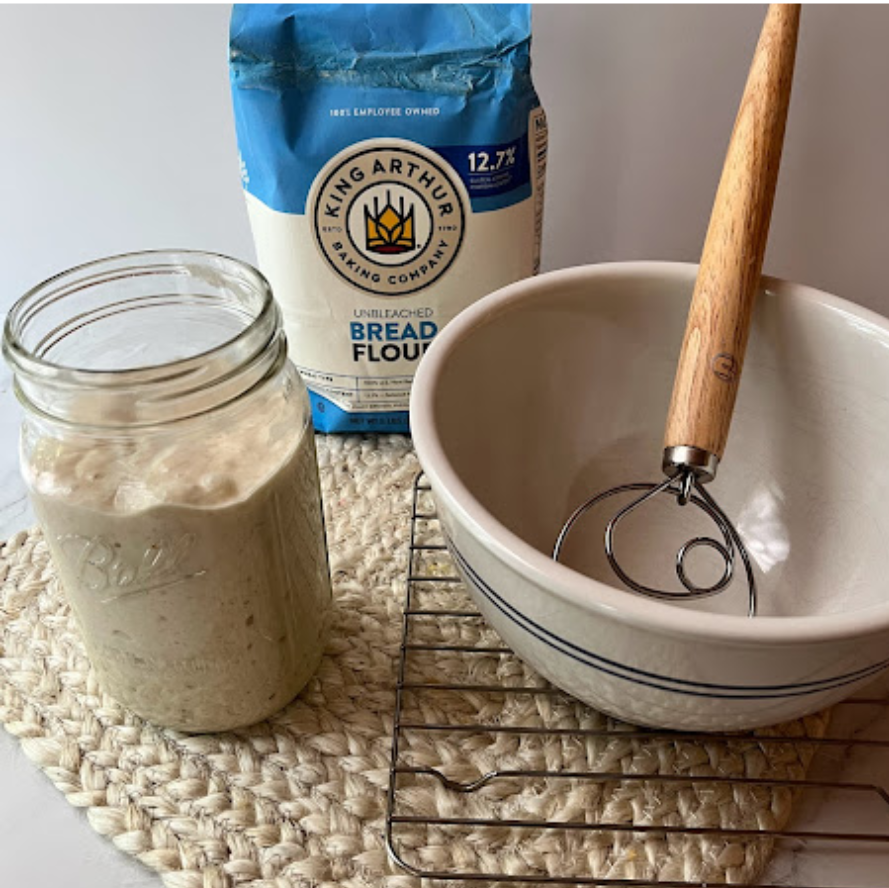
High-protein bread flour: ideal for those seeking a chewy crust due to its higher gluten content, which helps develop a stronger dough structure that traps air and expands well during baking.
All-purpose flour: has a lower protein content and produces a softer crust with less chew.
Whole wheat flour: offers a nuttier flavor and denser texture. It can make the dough a bit heavier, so it’s often mixed with white flour to lighten the texture while retaining the whole grain’s benefits.
The type of flour you use can affect how well your pizza dough freezes. High-protein flours like bread flour tend to handle freezing and thawing better because the stronger gluten network maintains its structure more effectively. In contrast, doughs made with all-purpose or whole wheat flour might become slightly more dense or have a less even texture after freezing and thawing.
Do I Need To Change My Mixing Method for Freezing Sourdough Pizza Dough?
You do not need to knead the dough differently if you plan to freeze it. Knead the dough as you normally would to develop the gluten structure, which is essential for a good texture after thawing and baking.
When mixing the dough, you can use a stand mixer with a dough hook, although my favorite sourdough pizza crust recipe is so simple that a wooden spoon and a bit of elbow grease do just fine! The goal is to achieve a soft dough with well-developed gluten. This is essential for a good structure and air bubbles in your crust.
Can You Freeze Sourdough Pizza Dough?
With these methods, you can enjoy the luxury of homemade pizza with minimal preparation on your actual cooking day. Whether you choose the versatility of raw frozen dough balls or the convenience of par-baked crusts, you’ll have delicious, homemade pizza that’s just a few minutes away from delighting your family and friends on any given pizza night.
Ready to try making great sourdough pizza at home? Dive into the world of sourdough with The Best Pizza Crust on the Planet!—a recipe guaranteed to transform your pizza nights. Plus, don’t miss out on our unique sourdough discard recipe for a thin and crispy pizza crust, perfect for those who love a lighter, crunchier base.
Whether you’re a seasoned baker or trying sourdough for the first time, these recipes are sure to impress. Don’t wait—try these recipes today and see why they’re a cut above the rest!
